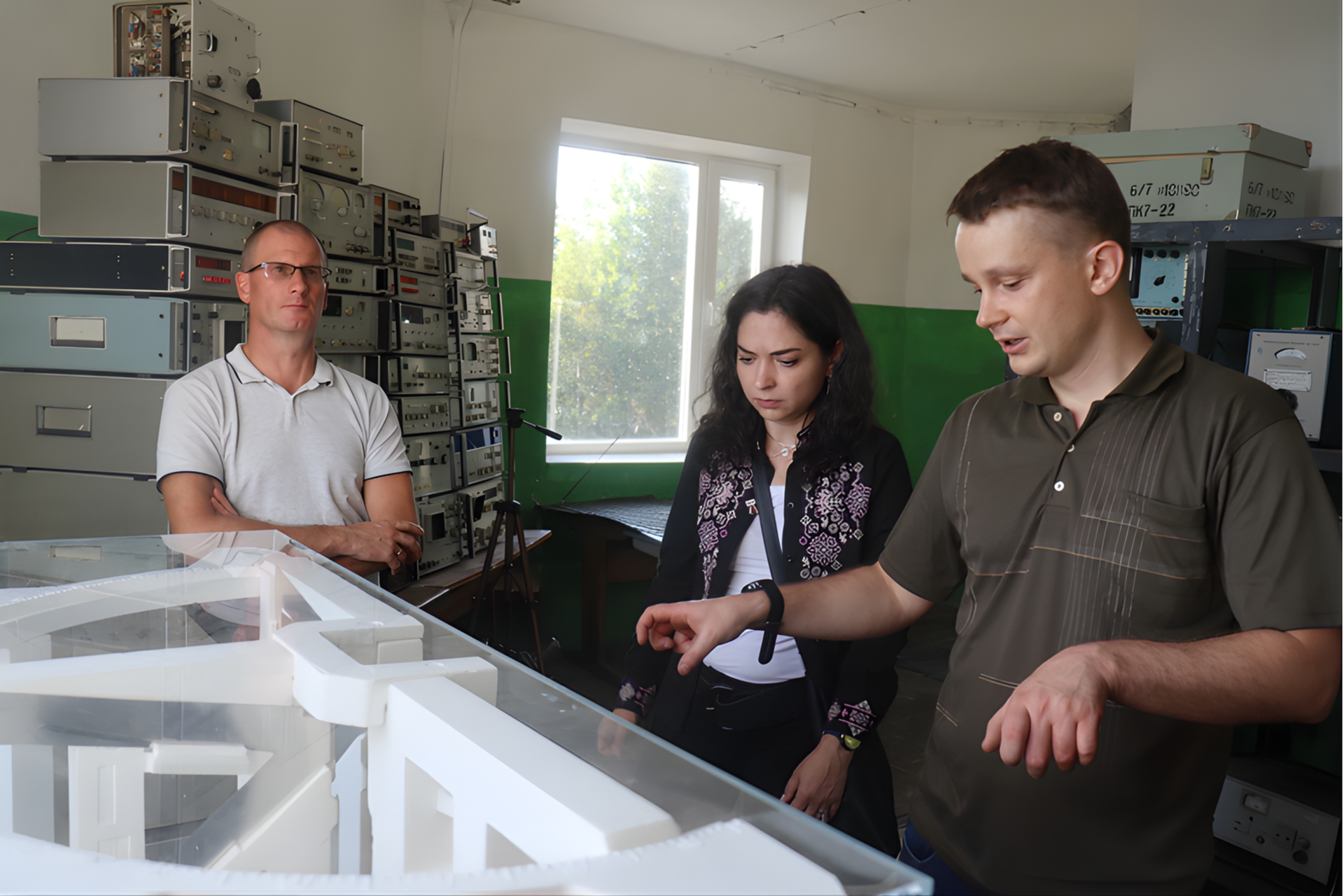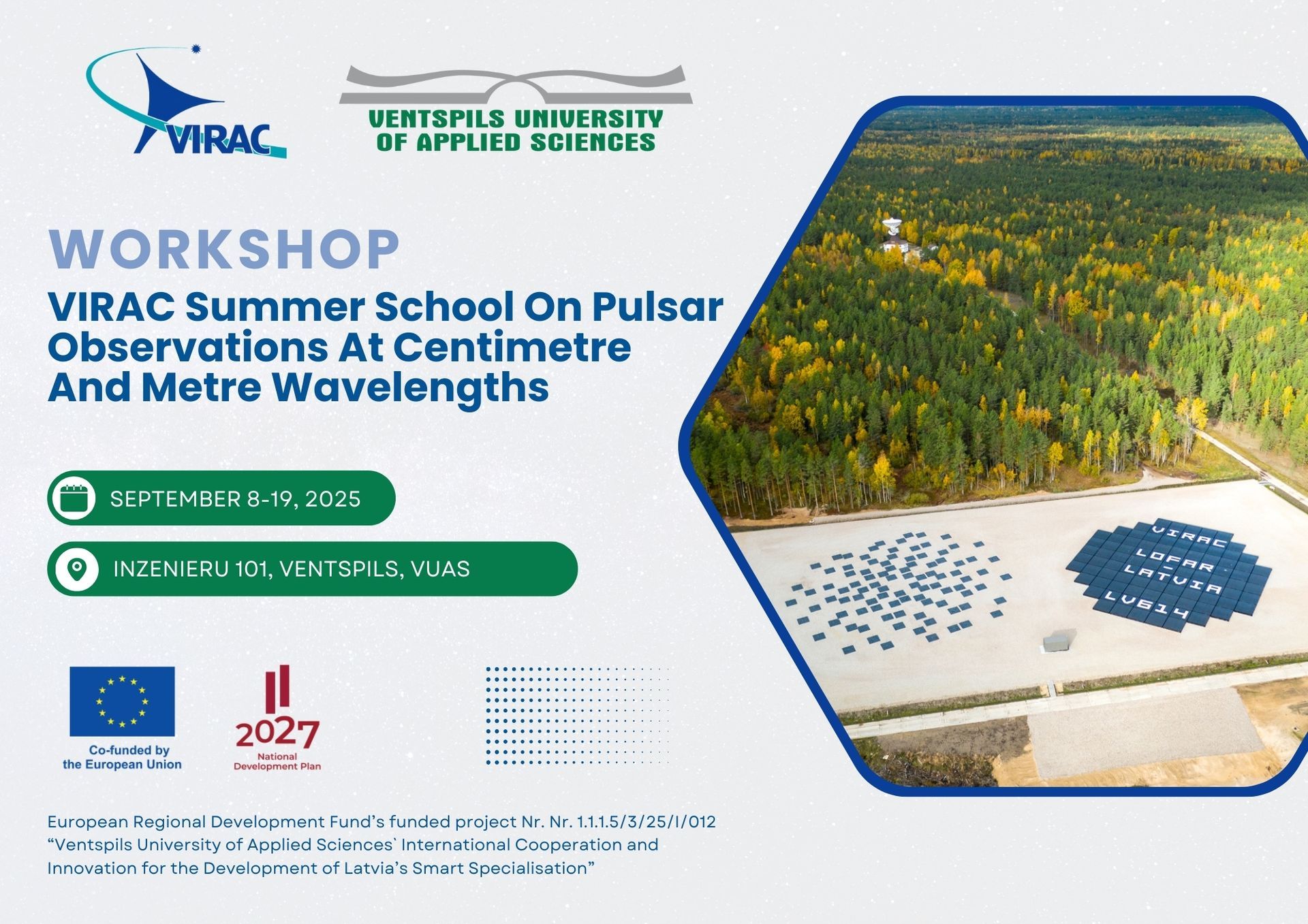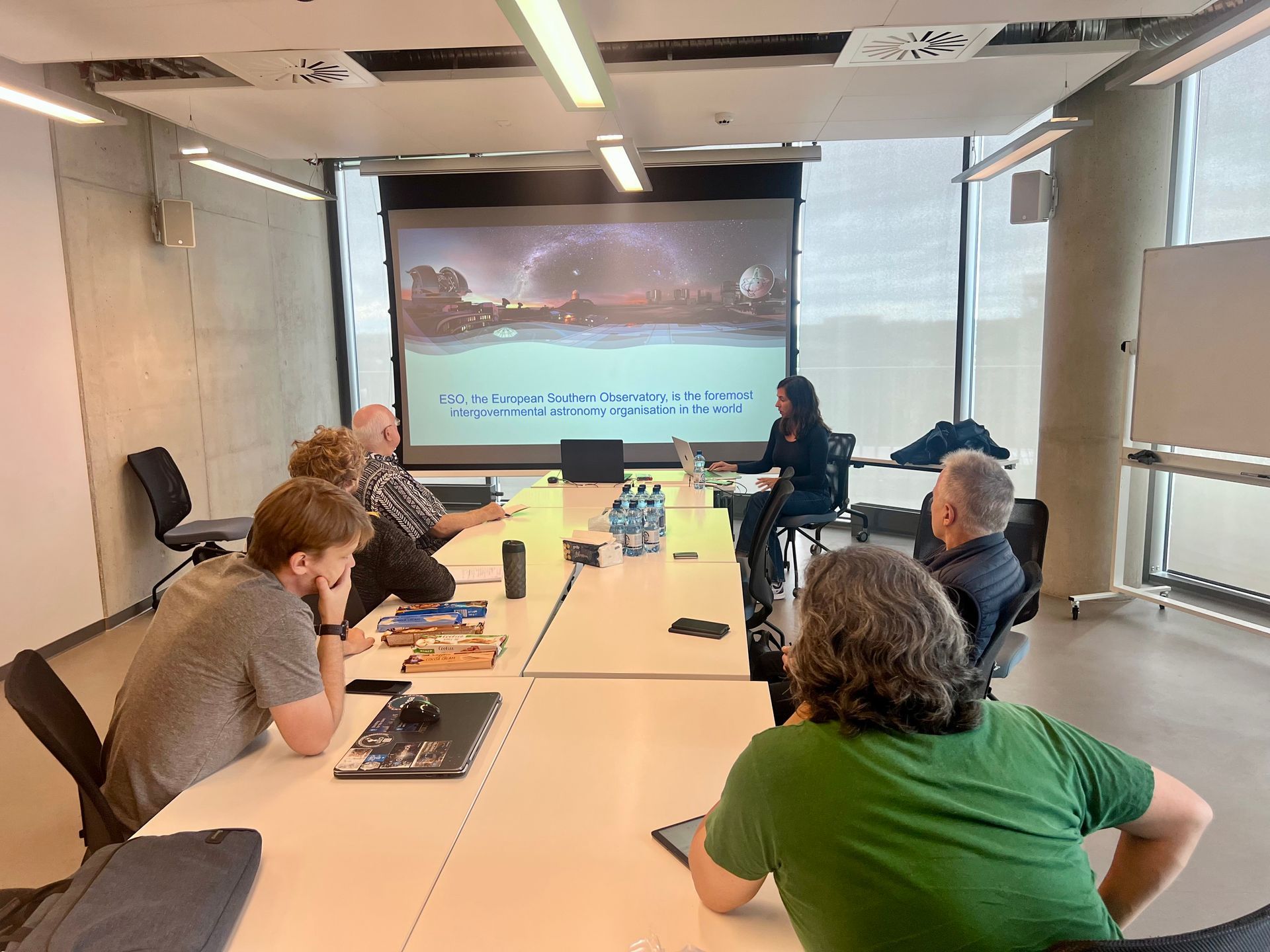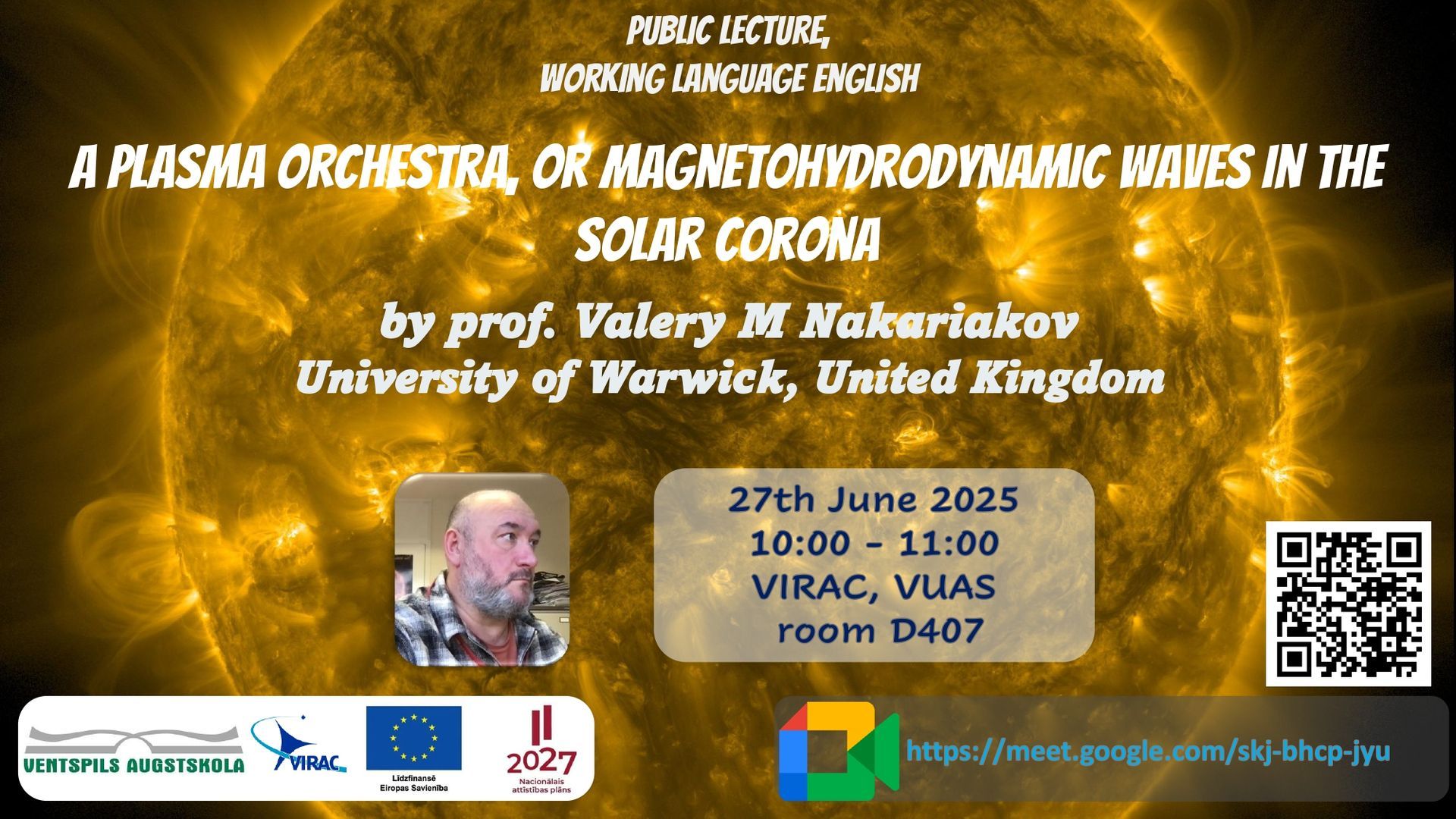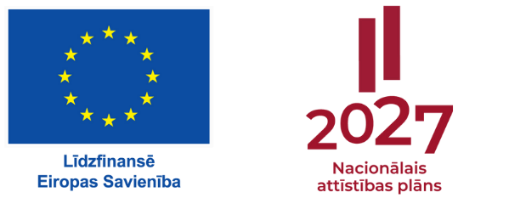PROJECT
Ventspils University of Applied Sciences` International Cooperation and Innovation for the Development of Latvia’s Smart Specialisation
Project title: “Ventspils University of Applied Sciences` International Cooperation and Innovation for the Development of Latvia’s Smart Specialisation”
Project No: 1.1.1.5/3/25/I/012
Project implementor: Ventspils University of Applied Sciences
Project duration: 01.06.2025. – 30.11.2029.
Total Budget: 568,000.00 euro: European Regional Development Fund (85,00%) – 482,800.00 euro and State Budget Funding (15%)– 85,200.00 euro.
The project aims to promote Latvia’s participation in international research initiatives and increase the competitiveness and global visibility of Latvian scientific institutions. In cooperation with ERIC consortia (JIV ERIC and LOFAR ERIC), it is planned to strengthen scientific capacity and excellence in radio astronomy, astrophysics, information technologies, data processing methods, and the development of new technologies.
To achieve these goals, existing research infrastructure and resources will be improved, new scientific methods and technologies will be developed, and knowledge transfer and integration of young researchers into the international scientific community will be promoted. Within the project framework, 16 international cooperation projects that exceed the quality threshold are planned for development.
Main activities:
- Support for the preparation of project applications submitted and evaluated above the quality threshold in the Horizon Europe programme and the 10th IP sub-programme competitions (at least 16 project applications).
- Ensuring participation in ERIC consortia and ESFRI platforms, including:
- foreign and domestic business trips and service trips,
- creation of communication materials,
- organisation of conferences and seminars.
Contact information: Santa Kalvāne,
santa.kalvane@venta.lv
PROJECT NEWS
